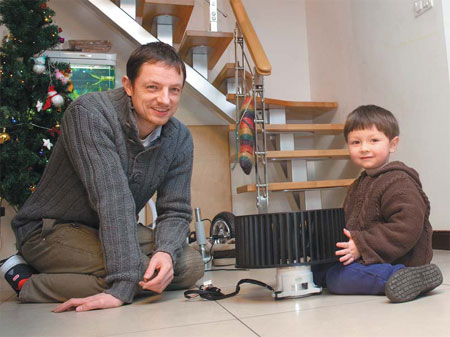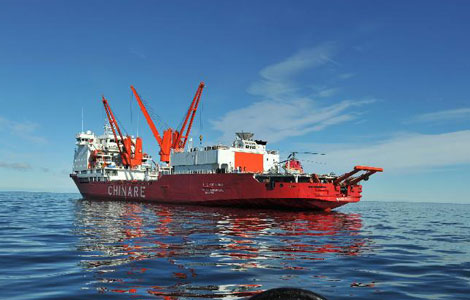Expats seek to beat smog with technology
Updated: 2014-01-17 07:17
By Matt Hodges in Shanghai (China Daily)
|
||||||||
Dutch residents of Shanghai explore futuristic solutions to purify city air
Several independent Dutch inventors are among a handful of foreigners who have found unique ways to combat China's smog, as air pollution in Shanghai this winter soared to historic highs, making facemasks a seasonal fashion accessory.
The hazardous haze compelled Shanghai resident Niels Woelders to design an elaborate air-filtration system in his apartment that he claims is second-to-none.
It has also prompted one Chinese-Australian couple in the city to chase investors for a pollution-themed TV show.
Meanwhile, designer Daan Roosegaarde has been building a giant machine dubbed "smog" that he claims will be able to vacuum the noxious fumes from Beijing's skies.
If successful, it would rank as the world's largest air purifier.
One foreign artist in Beijing is even working on an air-purifying bicycle made using parts of a trash can, a fighter-pilot mask and a pedal-powered wind generator.
It is hard to say whether media reports that Beijing may pump nitrogen into the skies to tackle the problem are any more outlandish.
On a lighter note, photos showing Beijing residents with cigarette butts plugging their nostrils recently went viral online, prompting serious investigation by some Chinese newspapers into the efficacy of this smog-reducing tactic. The apparent message from an exasperated but resilient citizenry was: If you can't beat it, laugh at it.
Heavy pollution made for distressing headlines throughout 2013. It grounded flights in cities such as Harbin, the capital of Heilongjiang province, which is famous for its monolithic ice sculptures. It shuttered thousands of schools and construction sites in Beijing. It also ramped up sales of air purifiers on Internet retailer Tmall.
Along with the strengthening yuan, it was blamed for inbound tourism to the capital falling more than 10 percent in 2013.
Some 1,100 km south in Shanghai, the air quality index raced off-grid for several days in December - even exceeding 500, a reading the United States consulate classifies as "beyond index" - causing more expats to reconsider their long-term plans.
The city responded by closing factories and ordering one in three government-used cars off the road.
Three months earlier, at least one World Health Organization body officially acknowledged outdoor pollution as a carcinogen for the first time.
For Woelders, an electrical engineer with several patents to his name, relocating was less of an option because he has a Chinese wife and child here. Instead, the resourceful Dutchman battened down the hatches and built an air-cleaning unit, which he claims is more effective at eliminating harmful chemicals and gases than most of the products consumers can buy.
It operates on a seven-stage process that even filters out bacteria and viruses.
"My son's kindergarten has a rule about needing to keep the window open to let in air," he said. "But if you open the window, you may as well switch off your air purifier because the pollution will enter faster than the purifier can clean it.
"My product is way more beneficial than most of what's available because my main goal is to solve this problem, not make a large profit."
Woelders said his do-it-yourself system took him about a year to build. It cost over 60,000 yuan ($9,840) and required the use of more than 170 meters of tubing.
He also spent 20,000 yuan on a portable air-pollutant tester, and last week forked out another 15,000 yuan on a secondhand piece of equipment from Sweden that produces thermal images showing the flow of air in rooms to detect any potential leaks.
"The main problem with a lot of the products on the market seems to be that they are better at dealing with PM2.5 (particulate matter small enough to penetrate the lungs), but poor when it comes to PM0.3 and gases," he said.
He said his invention can remove all PM2.5 and is also "20 to 25 times better" than other products at eliminating PM0.3, infinitesimal pollutants that can burrow deeper into the lung tissue.
It is equipped with enough active carbon to trap gases easily, as well as other systems to help eliminate excess build-up of carbon dioxide, which humans create naturally by breathing.
These systems can both detoxify other gases that are produced at home when cooking or using air-conditioning units, and provide a healthy supply of oxygen so users do not, for example, wake up with headaches.
"Most products have some active carbon but they don't use a lot of it, and to function well you would need a lot more," he said, adding that he hopes to have a marketable prototype completed this year.
Despite such stopgap measures, real change can only come from the government, the industrial sector and consumers.
A recent survey showed vehicle and factory emissions make up roughly half of the sources of pollution in Shanghai, with dust from construction sites and emissions from power stations and burning straw each contributing a further 7 to 11 percent.
The government aims to reduce PM2.5 density in North China by a quarter by 2017 by drawing on an allocated budget of 5 billion yuan, Shanghai Daily reported.
In hub cities such as Chengdu in Sichuan province, heavily polluting factories are being relocated outside city limits or refused permits, and officials have been ordered to rely more on public transport.
Raising public awareness of the efficacy of face masks and the importance of making environmentally sensitive purchasing decisions is part of the mandate of Lucie Gu, who regularly blogs on such issues.
Having formerly managed a video production company with her Australian husband, she is now trying to drum up funding for a TV show.
"We're trying to do a show about the environment, and the first episode we're doing is about air quality, just trying to raise awareness, and contact local governments and push the policies. Even if it's slow, someone has to be the one pushing," she said. "We already have some people in Beijing ready to sponsor us."
When it comes to ambitious projects, few can rival the one Roosengaarde is working on.
His electromagnetic "vacuum cleaner" uses subterranean copper coils to suck in airborne particles by generating an electrostatic field. Weird science it may be, but he claims to have been granted permission by Beijing's mayor to test his theory at one of the city's parks.
Roosengaarde said a finished system could be up and running by mid-2014.
"It's hacking the landscape, in a poetic way," he was quoted as saying.
matthew@chinadaily.com.cn
|
Dutch expat Niels Woelders and his son Ouya show off the fan unit from an elaborate air-filtration system that Niels has invented. An electrical engineer living in Shanghai, Niels says his invention is many times more effective than existing domestic air purifiers. Gao Erqiang / China Daily |
(China Daily 01/17/2014 page7)
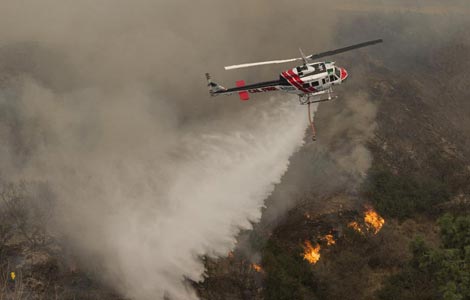
 Wildfire out of control in Los Angeles, US
Wildfire out of control in Los Angeles, US
 Bull-taming festival kicks off in India
Bull-taming festival kicks off in India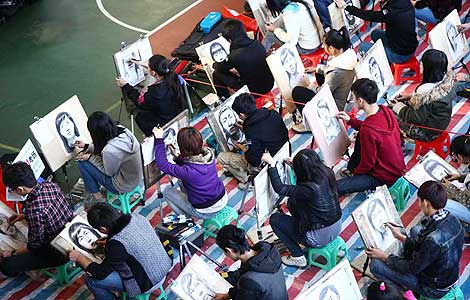
 Way to art school
Way to art school
 'American Hustle,' 'Gravity' lead Oscar nominations
'American Hustle,' 'Gravity' lead Oscar nominations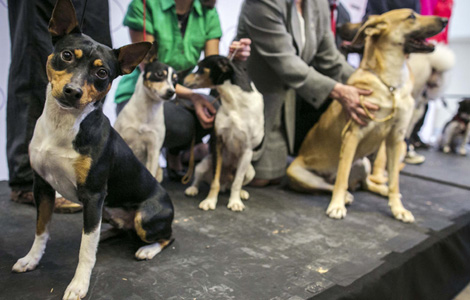
 138th Westminster Kennel Club Dog Show to open
138th Westminster Kennel Club Dog Show to open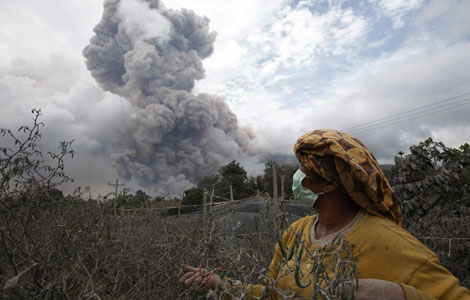
 Volcano displaces thousands in Indonesia
Volcano displaces thousands in Indonesia
 China issues fog alerts
China issues fog alerts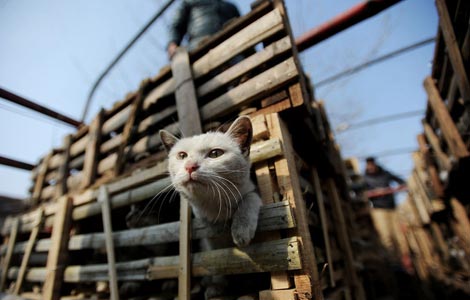
 Stray cats on the way to be slaughtered saved
Stray cats on the way to be slaughtered saved
Most Viewed
Editor's Picks
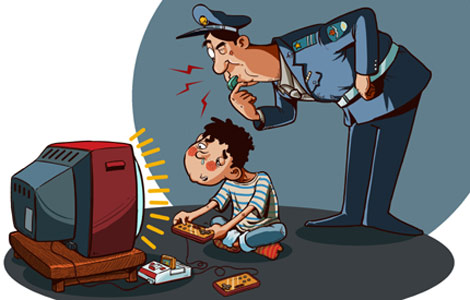
|
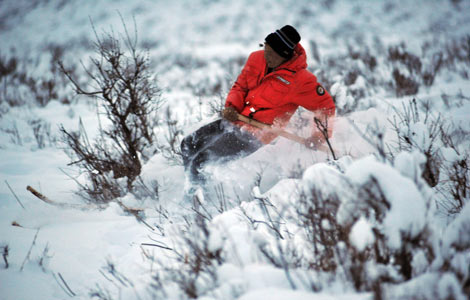
|

|
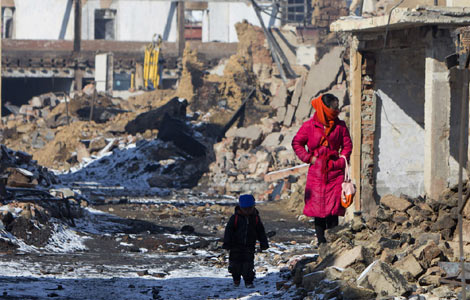
|
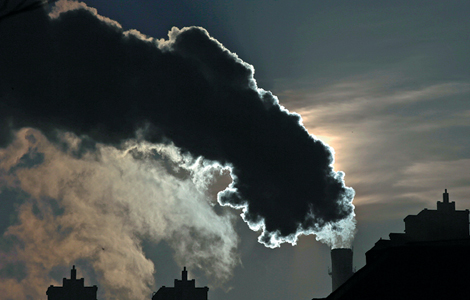
|
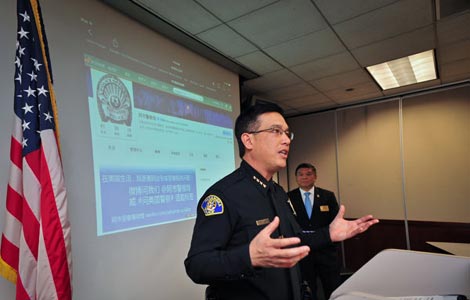
|
Today's Top News
US Treasury chief says high-level engagement 'welcomed'
Dirty air? Why not wash it?
He Xiaohui: A visionary rooted inservice
Auto-glass maker invests $200 million for US plant
Consul General lauds progress in 2013
Teaching English in China a good Plan B
China's US debt holdings reach record high
Asiana firefighters saw victim alive
US Weekly

|

|
